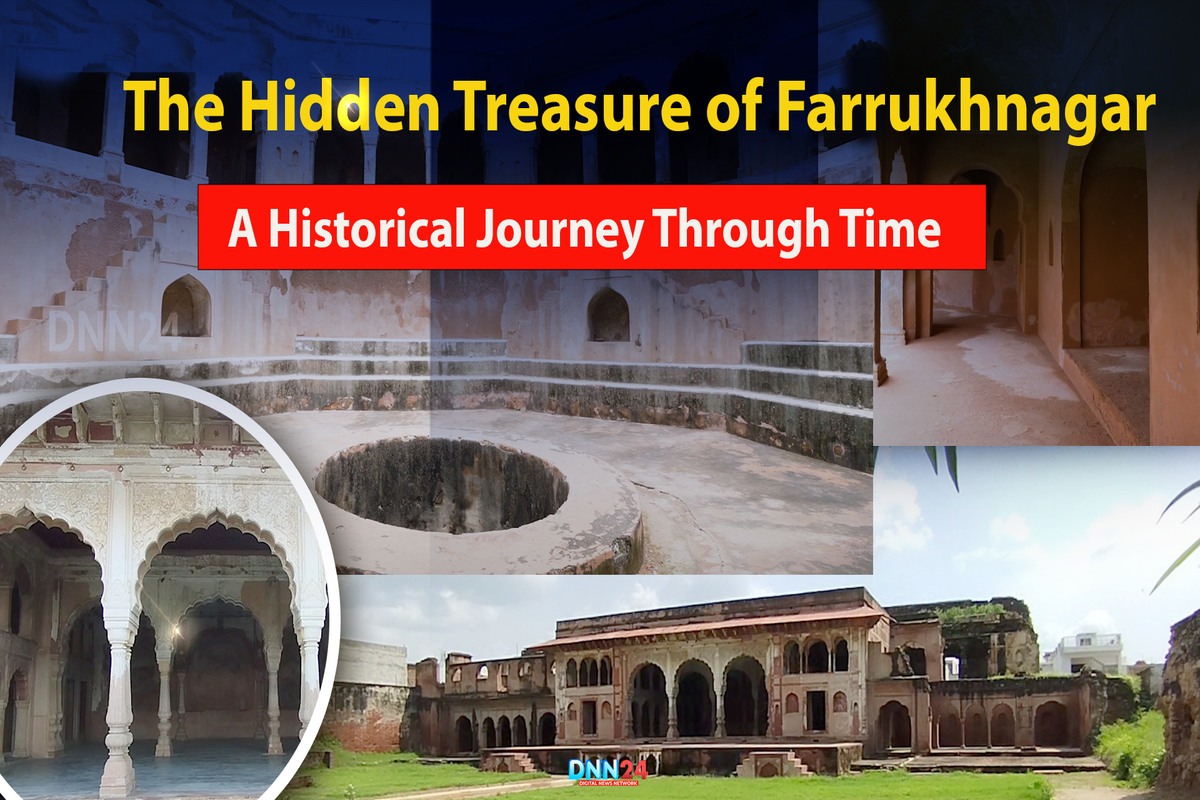Farrukh Nagar stands as a silent witness to a glorious past, nestled just 22 kilometers away from the bustling metropolis of Gurugram. While modern Gurugram (formerly Gurgaon) boasts impressive road networks, towering skyscrapers, shopping malls, and a thriving cyber city, Farrukh Nagar offers visitors a glimpse into history that spans centuries.
The town keeps priceless architectural accomplishments which display both the artistic excellence and engineering sophistication of ancient times. From magnificent gates to intricate palaces and engineering wonders like stepwells, Farrukh Nagar presents a rich tapestry of cultural heritage that deserves greater recognition and appreciation. This town combines past and present perfectly so visitors understand how royal glory merged with architectural wonders and historic events created the identity of this region.
The Magnificent Gateways to History
The Delhi Gate once served as the main entrance to Farrukh Nagar and stands as a testament to the Mughal architectural style that influenced the region. The enormous wooden structure merged strong iron nails into its construction for dual functions as entrance and defensive barrier against potential adversaries. Iron nails were installed in strategic positions across the gateway due to military planning which protected against enemy war elephants and battering rams.
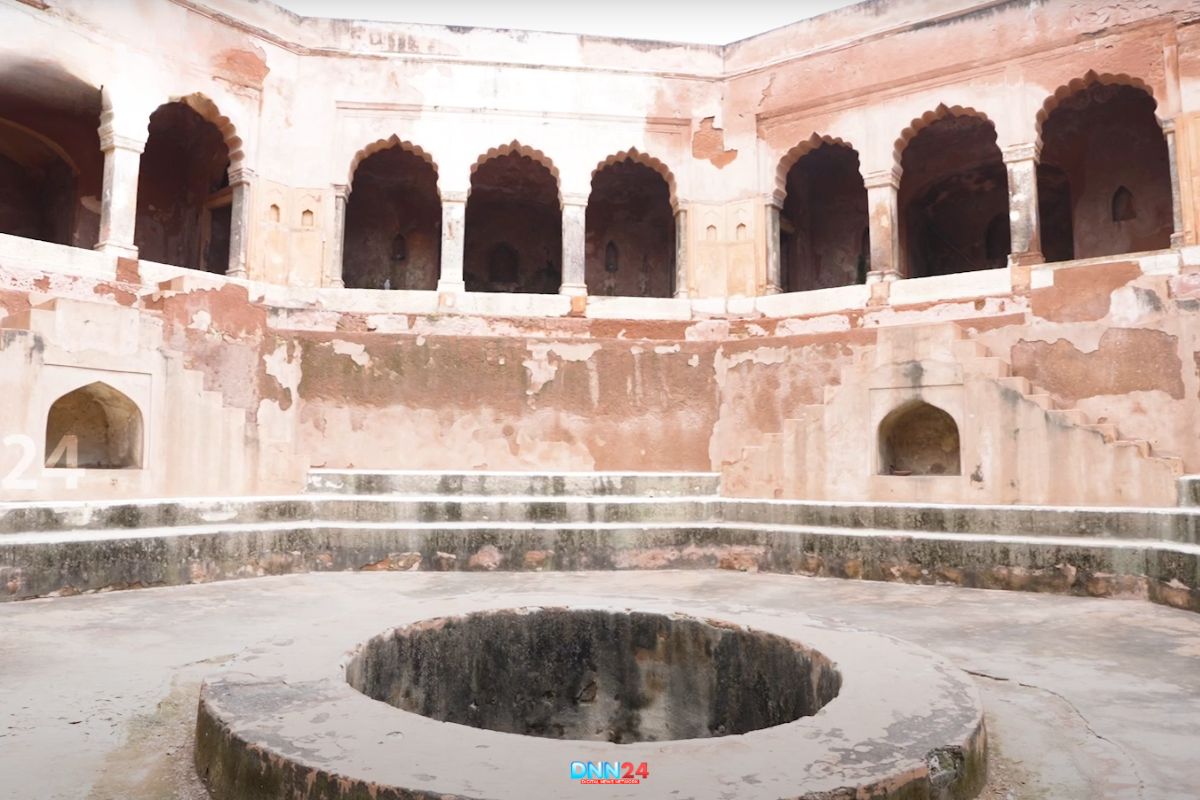
Modern shops occupy the vicinity of Delhi Gate while preserving its historical association with the contemporary marketplace. Visitors can access the top of the Jhajjar Gate to enjoy panoramic views because it sits directly above Gaus Ali Shah’s stepwell. Jhajjar city can be reached through this gate from its location. People who climb up the stairs at the gate can see several miles in all directions.
Farrukh Nagar stands as a silent witness to a glorious past, nestled just 22 kilometers away from the bustling metropolis of Gurugram. While modern Gurugram (formerly Gurgaon) boasts impressive road networks, towering skyscrapers, shopping malls, and a thriving cyber city, Farrukh Nagar offers visitors a glimpse into history that spans centuries.
Priceless architectural achievements in the town reveal both the fine art and sophisticated engineering techniques of ancient times. From magnificent gates to intricate palaces and engineering wonders like stepwells, Farrukh Nagar presents a rich tapestry of cultural heritage that deserves greater recognition and appreciation. The town illustrates an enchanting fusion between eras which enables people to perceive how regal legacy joined with architectural brilliance and historic milestones developed its regional reputation.
The Magnificent Gateways to History
The Delhi Gate once served as the main entrance to Farrukh Nagar and stands as a testament to the Mughal architectural style that influenced the region. The massive wooden gateway united iron nails with its fabric for entry and defense protection against possible threats. Iron nails received strategic positioning throughout the gateway because of military considerations to oppose enemy war elephants and battering rams.
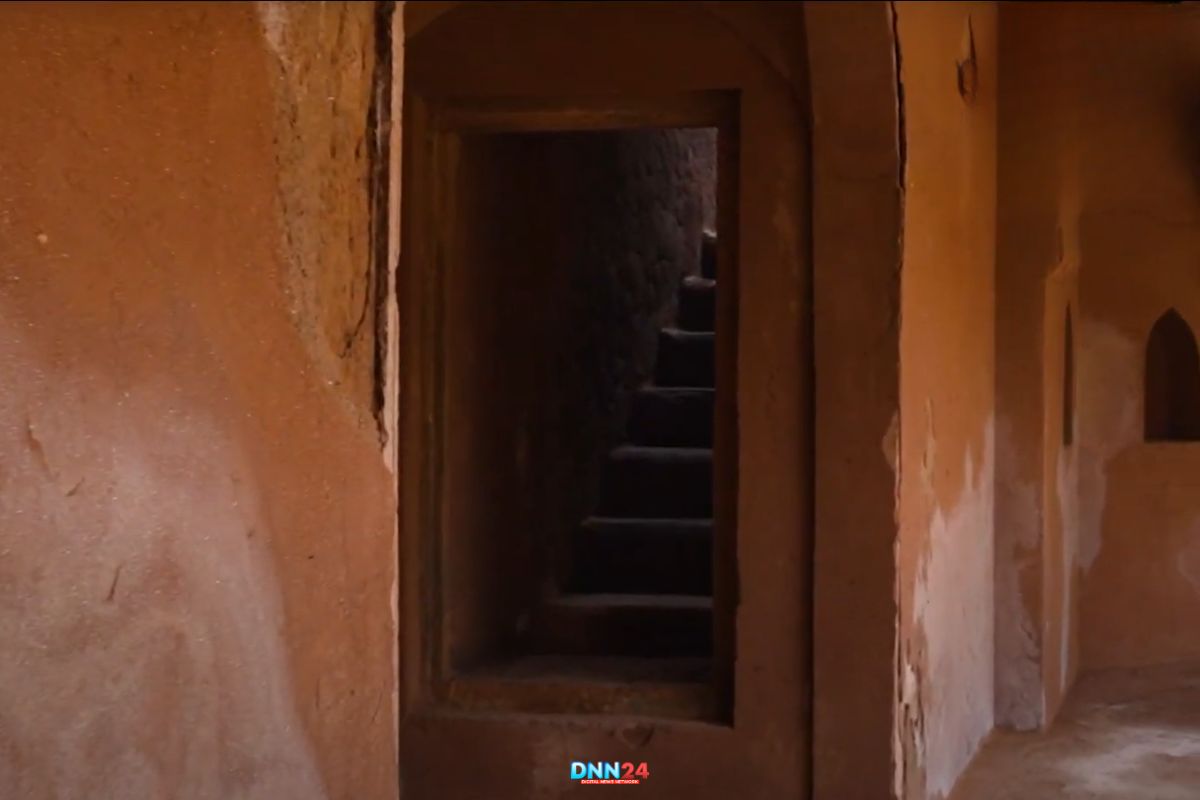
The present shops operate close to Delhi Gate with those establishments maintaining the historic link to today’s shopping district. From the top of Jhajjar Gate visitors can experience panoramic views because it rests directly above the stepwell of Gaus Ali Shah. Travelers can access Jhajjar city from this gate because of its geographical placement. The stairway path from the gate offers visibility of several surrounding miles to everyone who ascends.
Sheesh Mahal: The Palace of Mirrors
Sheesh Mahal represents a prominent historical destination among all attractions in Gurugram. Faujdar Khan built this palace during the 18th century with an exceptional royal architectural style that functioned as his residential residence. The Diwan-e-Aam public audience hall at the palace is built from sandstone using exceptional craftsmanship to create intricate carvings in its rectangular form. The palace exhibits exquisite architectural work on its verandahs that excellently represented artistic tendencies of that period. Perhaps the most distinctive feature of the palace is its extensive use of mirrors in the interior, which gives it the name “Sheesh Mahal” (Palace of Mirrors).
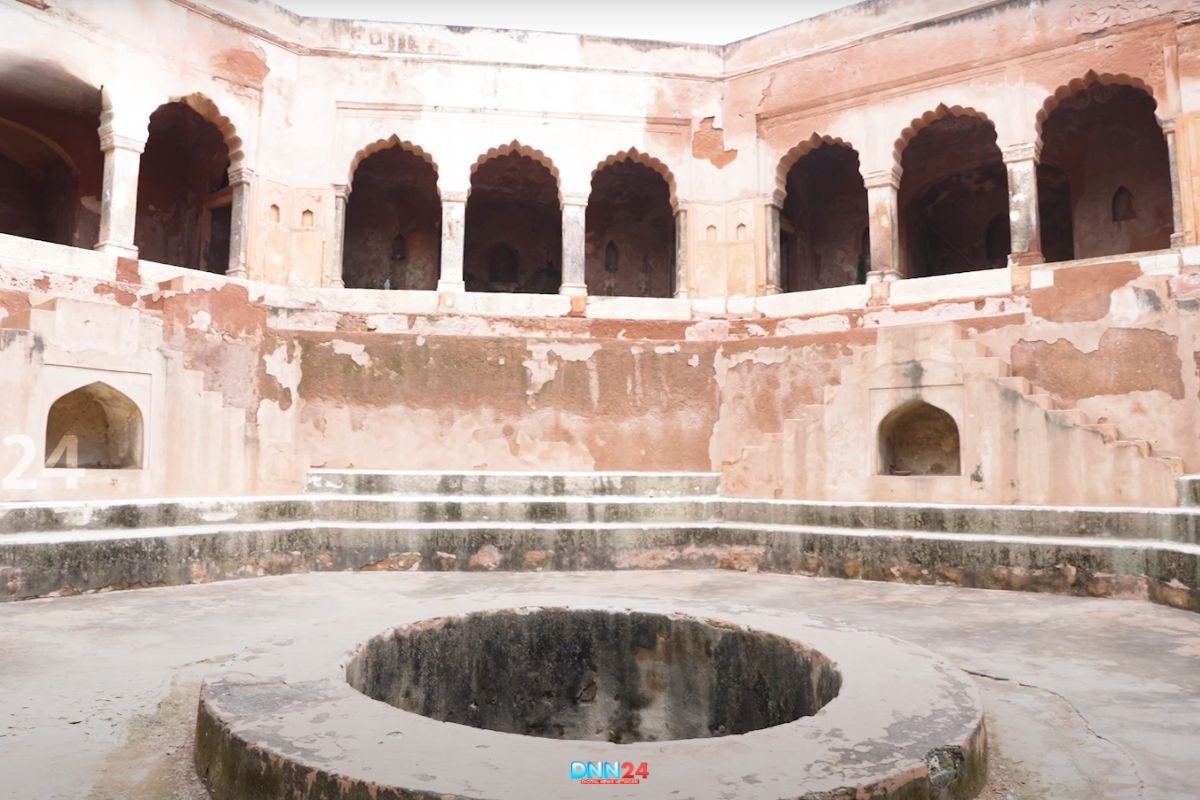
The palace chambers received increased lighting through the technical use of mirrors instead of mere decoration. The wooden ceiling warms up the architecture but keeps the structure cool by balancing against the stone walls. Within the palace complex stands a memorial dedicated to the martyrs of Farrukh Nagar who participated in the rebellion of 1857 against British rule, adding historical significance beyond its architectural value. The surprising discovery of a hidden tunnel starting from beneath the palace reveals itself as an emergency escape route before leading to a baoli connected outside the fort. The tunnel possibly provided two functions: emergency withdrawal and private royal family movement.
Preserving Farrukh Nagar’s Rich Heritage for Future Generations
Today, Farrukh Nagar represents an important but often overlooked chapter in India’s architectural and cultural history. Residents in Gurugram metropolitan area overlook this important historical location which presents different historical periods even though it stands near the city borders. The monuments in town struggle to maintain their preservation status against the forces of modernization and urbanization. Each structure in Farrukh Nagar tells a story—of royal ambitions, artistic achievements, engineering innovations, and historical events that shaped the region.
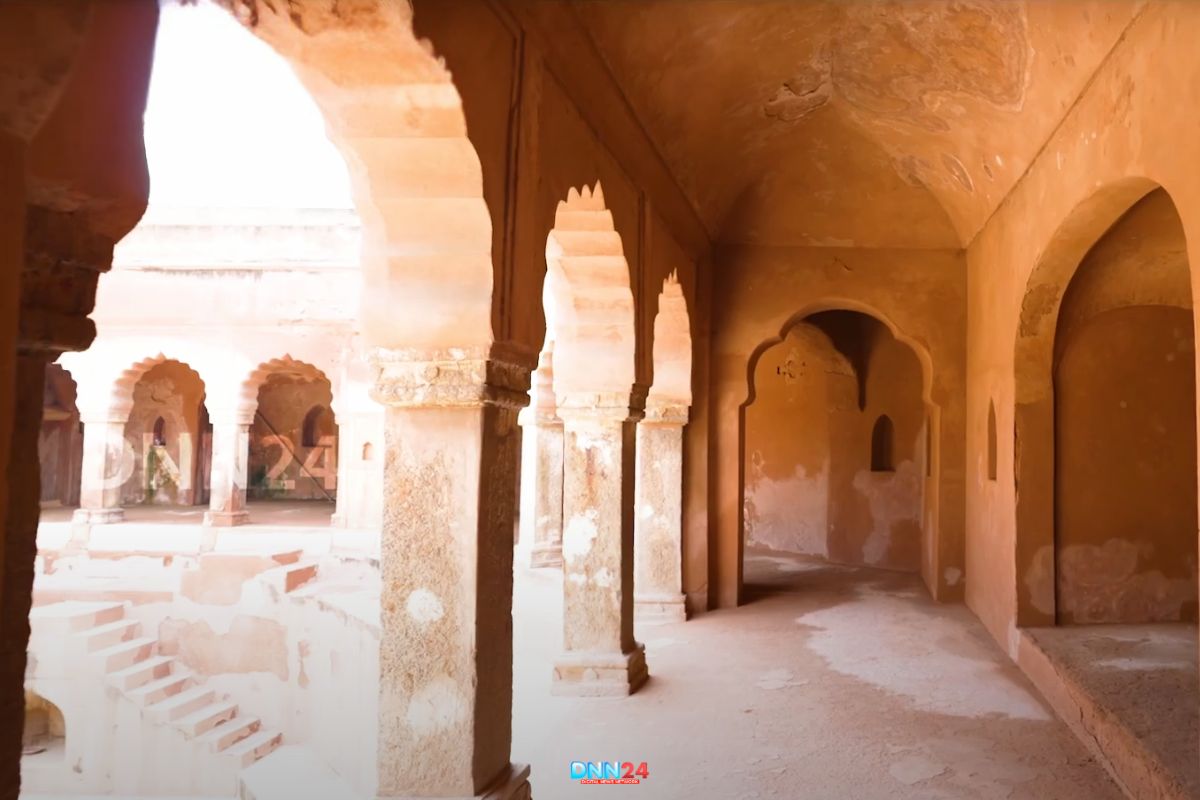
This town functions as a complete museum that enables people to witness historic civilizations which prospered in this particular section of India. These monuments require care for double purposes because they safeguard cultural backgrounds and serve to prevent the discontinuation of historical records. Architectural wealth requires sustained attention that can only be achieved through collective commitments among residents and both administrative institutions and enthusiasts who protect these cultural riches. Tourism promotion of Farrukh Nagar as a heritage destination will create economic advantages for the town yet still preserve its essential historical identity. The heritage sites function as time spans between past and present which allow contemporary Indians to honor their forebears’ artistic talents.
Also Read: The Diverse and Unique Art Forms of Bengal
You can connect with DNN24 on Facebook, Twitter, and Instagram and subscribe to our YouTube channel.

